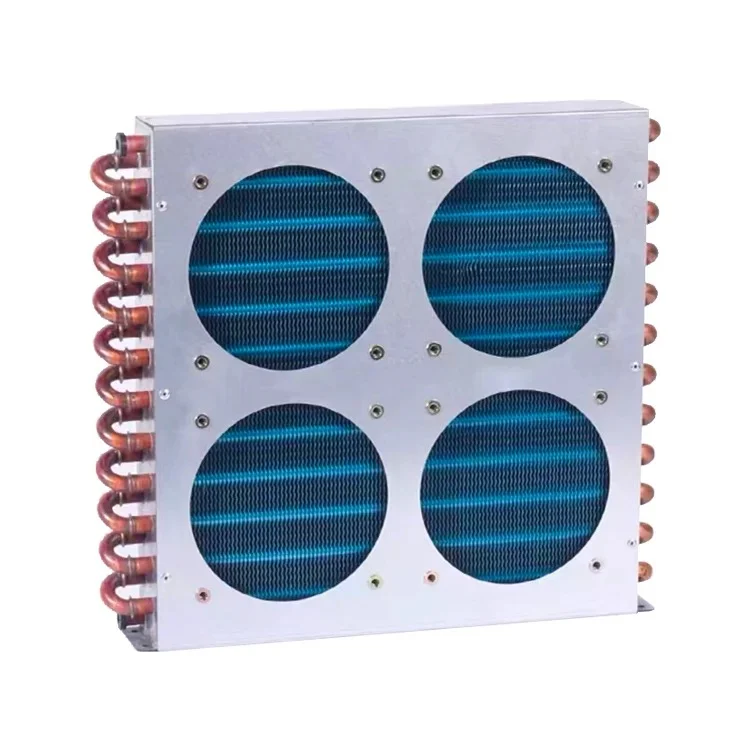Air cooled condenser is a common heat exchange equipment, widely used in air conditioning, refrigeration, refrigeration, and other fields. During storage and transportation, we need to pay attention to some matters to ensure the safety and performance of the condenser. This article discusses these considerations.

First of all, when storing air cooled condenser, we need to choose a dry and well-ventilated place. Both the internal passages and external surfaces of the condenser should be kept dry to prevent corrosion and contamination. At the same time, direct sunlight and rainwater immersion should be avoided to prevent the condenser from being affected by the external environment.
Secondly, when storing air cooled condenser, we need to pay attention to avoid stacking items that are too high or too heavy. The structure of the condenser is relatively fragile, and if subjected to excessive pressure or impact, it may cause damage or deformation. Therefore, during storage, we should ensure that the condenser is in a stable position, and avoid excessive pressure from other items.
In addition, when storing air cooled condenser, we also need to pay attention to prevent the accumulation of dust and dirt. Dust and dirt can clog the passages of the condenser, affecting its ability to dissipate heat. Therefore, we should regularly clean the surface and interior of the condenser to keep it in good working condition.
When transporting air cooled condenser, we need to take some measures to ensure its safety. First of all, we should choose suitable packaging materials, such as foam board, bubble film, etc., to protect the outer shell and internal structure of the condenser. The packaging material should have good cushioning and shockproof properties to prevent the condenser from being shocked and vibrated during transportation.
Secondly, we should choose the appropriate means of transportation and way. For smaller condensers, we can choose to use express or logistics transportation to ensure that the condenser can reach the destination safely. For larger condensers, we may need to use professional transportation equipment and a team to ensure safe transportation and handling.
In addition, we also need to pay attention to the transportation posture of the condenser. The condenser should be placed horizontally during transportation and avoid tilting or upside down. This is because the refrigerant and lubricating oil inside the condenser may leak or be lost, resulting in reduced performance or damage to the condenser.
Finally, we also need to pay attention to the transport temperature of the condenser. Condensers usually need to be shipped within a certain temperature range to ensure that they work properly. During the transportation of the condenser, we should avoid exposure to extremely high or low-temperature environments, so as not to have adverse effects on the performance and structure of the condenser.
To sum up, when storing and transporting air cooled condenser, we need to pay attention to a series of matters. In terms of storage, we need to choose the right environment, avoid stacking heavy items, and prevent the accumulation of dust and dirt. In terms of transportation, we need to choose appropriate packaging materials and transportation tools and pay attention to the attitude of the condenser and the transportation temperature. By following these precautions, we can ensure the safety and performance of the air cooled condenser and prolong its life.
https://www.ningbo-senjun.com/Precautions-for-storage-and-transportation-of-air-cooled-condenser.html














